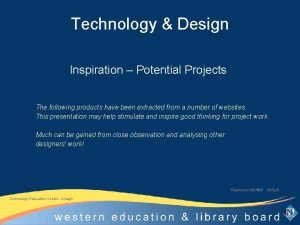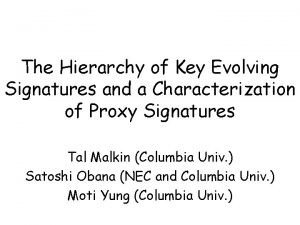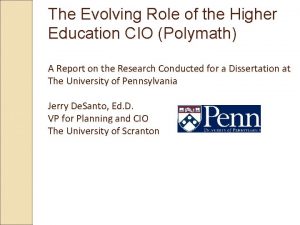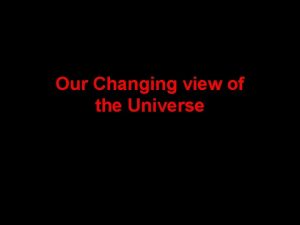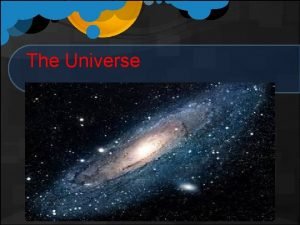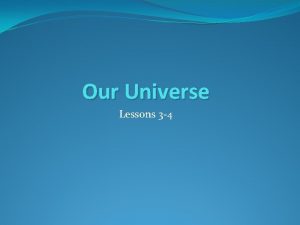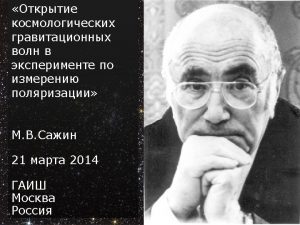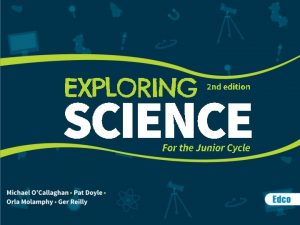Lecture 1 Our Evolving View of the Universe







- Slides: 7

Lecture 1: Our Evolving View of the Universe Dr. Michael Burton GENS 4001 1999 -X 1 Evolving View of the Universe 1

History of Science & Astronomy: The Greeks • 550 BC Pythagoras: Natural phenomena described by mathematics. • 300 BC Aristotle: Universe governed by physical laws. • (Aristarchus proposed heliocentric model. ) • 200 AD Ptolemy: Geocentric cosmology. Epicycles and Deferents, as explained in the Almagest GENS 4001 1999 -X 1 Evolving View of the Universe 2

History of Science & Astronomy: The Renaissance • 1543 Nicolaus Copernicus: Heliocentric cosmology in De Revolutionibus (circles). • 1573 Tycho Brahe: De stella nova in Cassiopeia - precise observations. • 1619 Johannes Kepler: Three (empirical) laws of planetary motion (ellipses). • 1610 Galileo Galilei: Telescope shows an imperfect, non-geocentric universe. – Dialogue on the Two New Sciences

History of Science & Astronomy: Physics • 1687 Isaac Newton: Principia: Physical laws to explain the observations. – Laws of Motion and Gravity allow predictions. • 1905 Albert Einstein: Special and General theories of Relativity explain nature of light and gravity. • ? ? You ? ? Quantum Gravity and a Unified Field theory for Forces of Nature. GENS 4001 1999 -X 1 Evolving View of the Universe 4

Scientific Method & Astronomy • The universe is comprehensible. • Scientific method is a procedure formulating theories, which can be tested by experiment to build models to describe phenomena in the universe. • Observations of the heavens have led to the discovery of some fundamental laws of nature. GENS 4001 1999 -X 1 Evolving View of the Universe 5

Key Ideas • The heliocentric theory simplified the explanation of planetary motions compared to geocentric theory. • In it the Earth is but one of several planets orbiting the Sun • Ellipses describe the paths of planets around the Sun more accurately than circles do. • The invention of the telescope lead to new discoveries about the universe around us. • Newton based his explanation of the universe on three assumptions called the Laws of Motion. GENS 4001 1999 -X 1 Evolving View of the Universe 6

Key Ideas • Together with the law of gravity, they explained Kepler’s empirical laws with great accuracy. • Einstein’s theories of relativity accounted for small discrepancies in Newton’s Laws which were only apparent through careful observation. • The theory of relativity, which explains the universe on the largest scales, is incomplete and has yet to be reconciled with quantum theory, which explains it on the smallest scales. GENS 4001 1999 -X 1 Evolving View of the Universe 7
